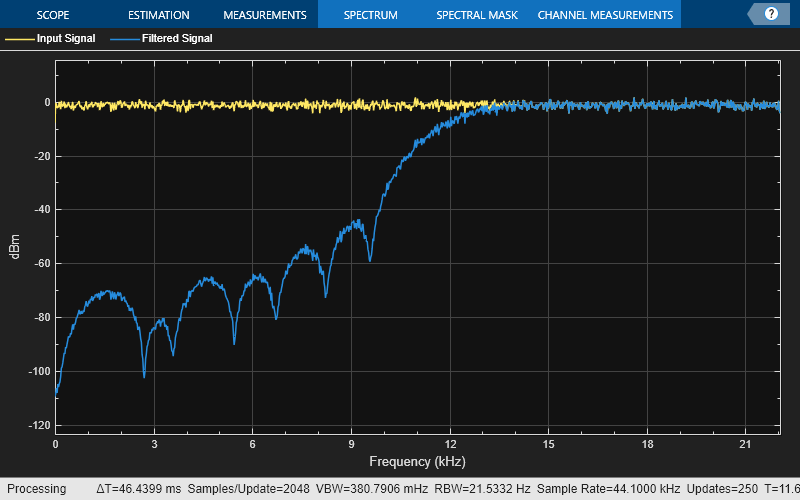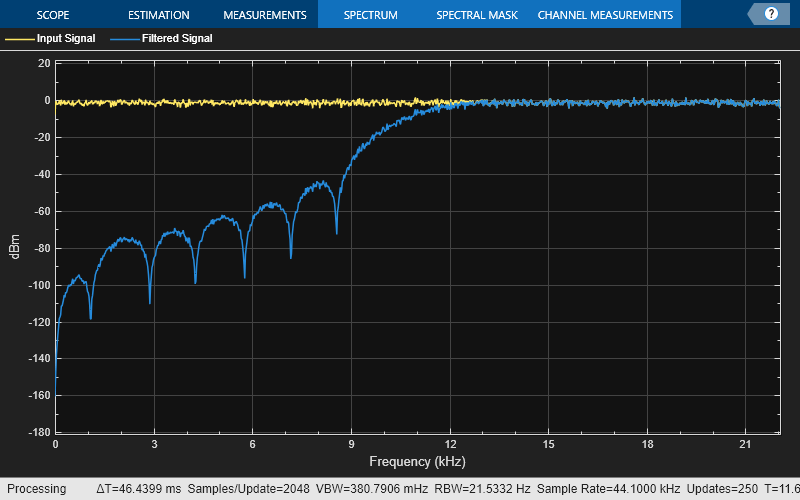designHighpassFIR
Description
B = designHighpassFIRB is a vector of filter coefficients of length 101.
The System object™ argument is false by default. To implement the filter,
assign the filter coefficients in B to a dsp.FIRFilter object.
B = designHighpassFIR(Name=Value)
For example, B =
designHighpassFIR(FilterOrder=30,CutoffFrequency=0.5,Window="hann",SystemObject=true)SystemObject argument is
true, the function designs and implements the highpass FIR filter.
B is a dsp.FIRFilter
System object in this case.
When you specify only a partial list of filter parameters, the function designs the filter by setting the other design parameters to their default values.
When you specify any of the numeric input arguments in single precision, the function
designs the filter coefficients in single precision. Alternatively, you can use the Datatype and
like arguments to control the coefficients data
type. (since R2024b)
Examples
Name-Value Arguments
Output Arguments
Extended Capabilities
Version History
Introduced in R2023bSee Also
Functions
designHighpassIIR|designLowpassFIR|designBandpassFIR|designBandstopFIR|designHalfbandFIR|designMultirateFIR|designFracDelayFIR|designRateConverter



